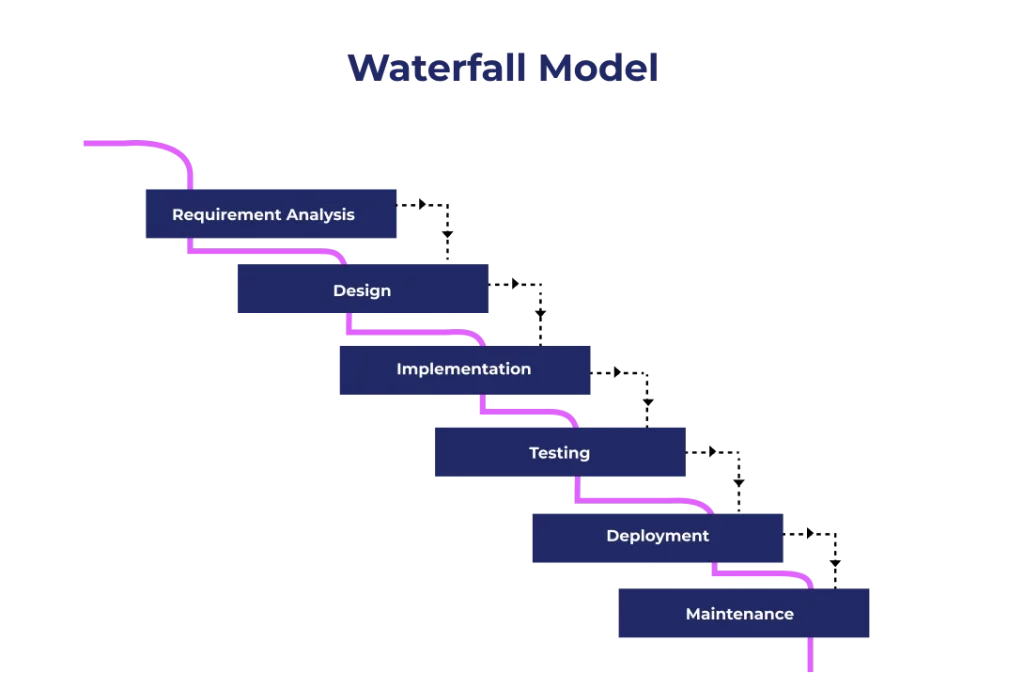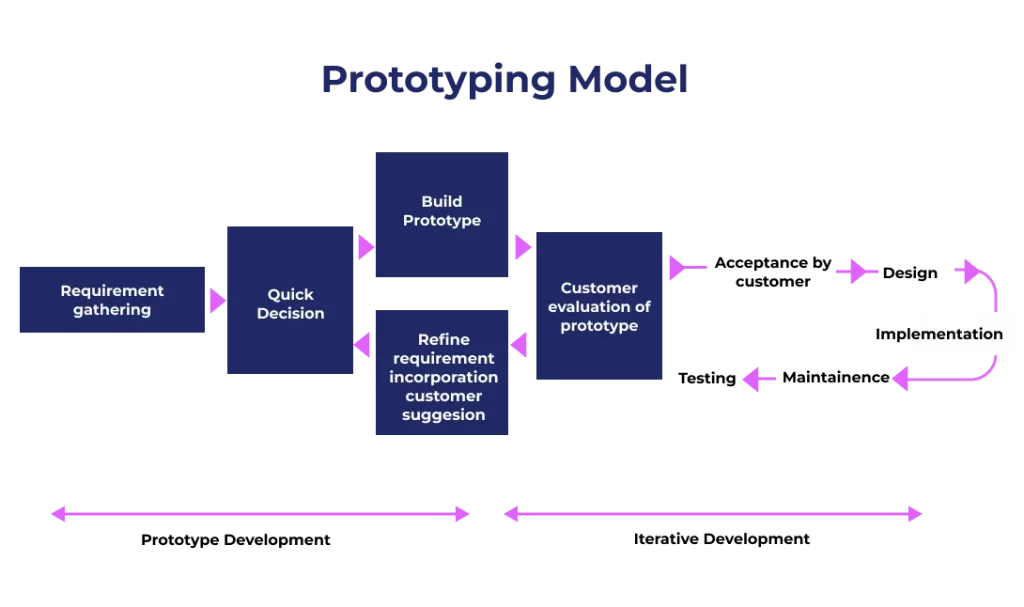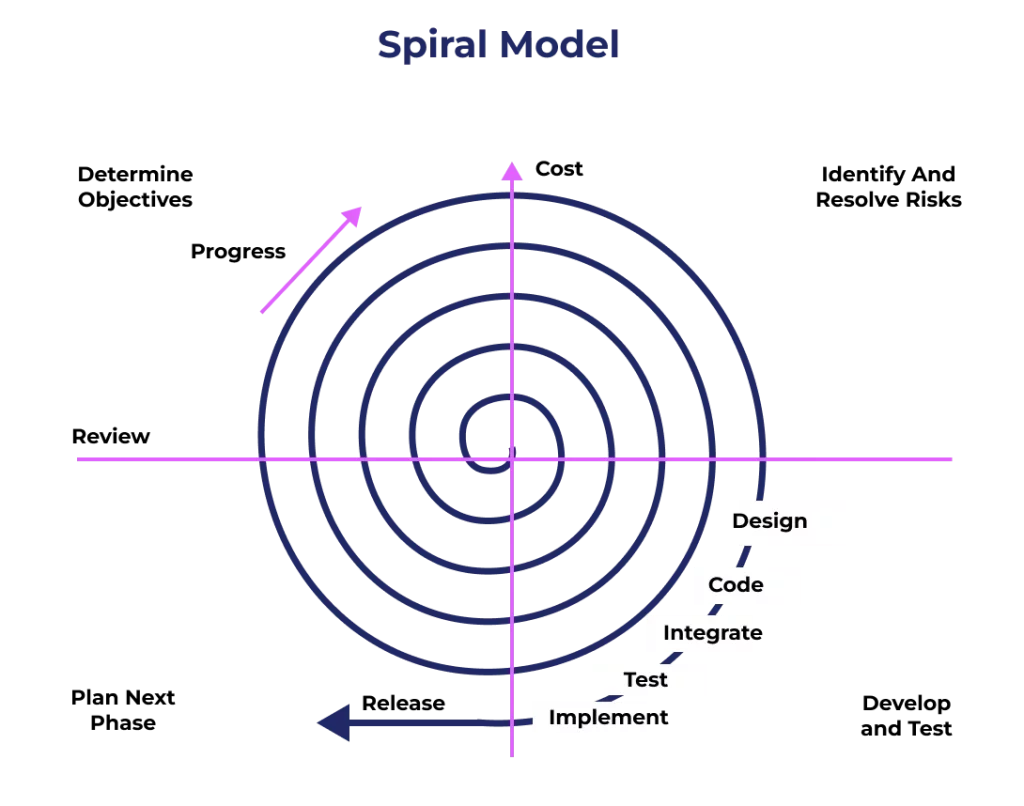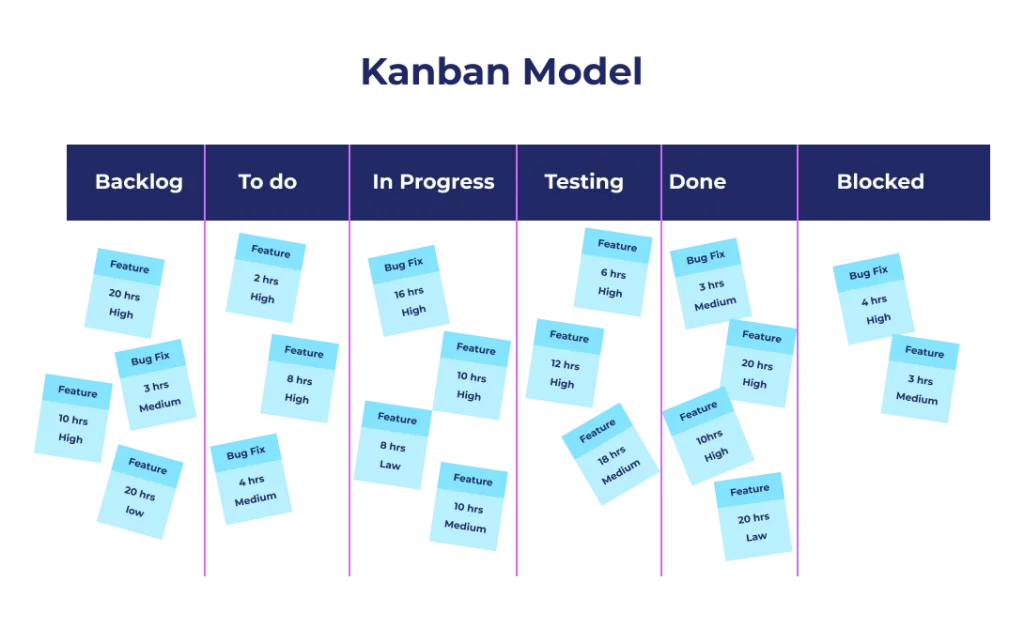Summary – Software development models are the way to navigate the demanding and complex software development process. The project’s quality, budget, ability, and timeframes depend on the chosen development model. There are many recognized SDLC models with respective advantages and disadvantages.
Software development is a process of designing, building, testing, and maintaining applications and programs. Software development has empowered smartphone apps, supported businesses worldwide, and has become an internal part of our lives. So, let’s first understand and acknowledge the software development models.
What is the Software Development Model
Software development models are various methodologies that are selected for product development. There are multiple types of software development models that can achieve the different required objectives in each program.
The selection of the model is essential for the proper output of the application because the software development life cycle (SDLC) is a defined approach to build the software with an appropriate plan, design, development, testing, and maintenance of the software applications.
For every project, it is essential to select the correct SDLC model, which ensures the success of the project. Choosing the wrong model can result in tedious and low-quality work.
Remember that SDLC models contribute heavily to project success, timeline, and budget. Today, we will cover nine of the well-appreciated software development models.
Top 9 Software Development Models
There are more than 50 recognized software development models, and every model is different.
Software development is divided into two parts: First is the regular one, which is well-known and mostly used, and the second one is under the agile methodology.
Here, we will see the seven regular development models and two from the Agile methodology.
- Waterfall Model
- V- Model
- Incremental and Iterative Model
- RAD Model
- RUP Model
- Prototyping Model
- Spiral Model
- Scrum Model
- Kanban Model
Waterfall Model

The waterfall method is among the oldest and most well-received software development models. This software method works on the linear methodology; it starts with proper requirement analysis and ends with maintenance.
The main concept of this SDLC model is to complete one stage fully, and then only you can work on the next stage. This method eliminates overlapping of work and gives smooth, step-by-step progression. The waterfall method sequence is in a straight line from start to end.
Advantages
- Detailed and Complete Documentation
- Controlled Process and Deliverables of each stage
- Simple and transparent work approach
- Stable and fixed terms, requirements, and costs.
Disadvantages
- No Room for changes until the end
- Revised work is not possible in the development phase
- The lengthy and costly development process
V- Model

The V model is an extended and advanced version of the Waterfall software development model. It is also known as the validation and verification model. This model has testing after each stage, which makes it different from the Waterfall model.
The model helps get feedback after the development stage. The testing run after each stage is completed it helps you see the product run and process simultaneously. It is beneficial for improving the quality of the product.
Advantages
- Maintain a simple and proper workflow.
- Testing helps in improving at every stage.
- Reduced risk of bugs
- The model is cost-saving, as there are few changes after development.
Disadvantages
- Rigid Model and small room for flexibility
- With one single change, the whole process needs to be restart
- Need extra help fixing fundamental bugs.
Incremental and Iterative Model

The Incremental and Iterative software development model is mainly used for custom software development. The work in this process is done in iterations, which act as stages. There is a defined framework for the project, which is divided into iterations.
In each iteration, you can add new modules and functions without changing existing ones. The overall design framework and design remain constant in the project, but the software keeps evolving with every change in each iteration, making it more solid and complete in time.
Advantages
- Immense flexibility- can make changes at any stage
- Room for continuous improvement and changes in the development process
- Bugs and errors are easy to detect through constant testing
- Easy implementation of customer feedback.
Disadvantages
- This SDLC model is hard to manage and follow the sequence
- It needs a lot of communication and collaboration
- Consumes more human, time, resources, and money.
RAD Model

Rapid Application Development, famously known as the RAD software development model, is based on less planning and more on prototyping and feedback. The model focuses on quick results rather than detail planning; it drives string into building the software.
The model creates only basic functionality for the software and then starts developing the different components of the application parallelly. Various developers can work on different parts to increase the efficiency and process. Each cycle enhances the project by adding modifications based on feedback.
Advantages
- Flexible development in all stages
- Easier to transfer deliverables
- Reduces risk of bugs and errors
- Reduction of manual coding
Disadvantages
- Not useful model for big projects
- There is a potential technical risk.
- Not all platforms are compatible with the RAD model.
Read About: SDLC Development Phase – A Detailed Overview
RUP Model

The Rational Unified Process software development model is like a complex puzzle. It starts with a rough idea of how the project will work at the end and then breaks the development process into small and manageable sections.
Each section has an iteration that lasts around 2 to 4 weeks, and each iteration focuses on one specific part of the work. Every iteration, make progress in completing that section. In the process, you can adjust the involvement and detail for specific goals and requirements for the project. Each iteration section will ultimately complete the project.
Advantages
- The RUP model has easy adaptation
- This model works with in-depth documentation that is beneficial for future changes.
- The model helps in responding to potential risk practices in software.
- Work issues can be solved in the initial stages of development.
Disadvantages
- The procedure is hugely complex.
- The required documentation consumed a lot of time and money.
- The process can be confusing in the testing stage for big projects.
Prototyping Model

The prototyping SDLC models works around customers; it is a customer-centric work model. In this model, you need to sketch out the project blueprint. Then, give a rough draft or example of the product focusing on key features and layout.
After that, clients give feedback, and the corrections are made based on their input. When the improvisation is done, it is sent to customers again for their approval. Once it is approved, the client meets their preferences and needs, and then only the software development models are at work.
Advantages
- Completely Customer model and work on their feedback
- Give an idea or visual representation of the software
- Minimum changes after development
- Reduce the risk of miscommunication and misunderstanding
Disadvantages
- It consumes a lot of time and resources
- May require extra help from others for interpretation
- Not suitable for large complex projects
Spiral Model

The Spiral model stands as an ideal model for enterprise software development. The model places a significant emphasis on risk analysis in each development phase. It is divided into four key stages: Planning, risk analysis, engineering, and evaluation.
Each phase corresponds to another stage in the risk analysis process. The spiral model begins after it goes through risk analysis, engineering, and evaluation. It is perfect for big, complicated enterprise-level projects where risk assessment is crucial.
Advantages
- Continuous development helps in adding new features
- Flexibility in choosing strategies for development
- The risk-driven approach provides an early-stage risk assessment.
- Supports iterations and changes at any given time.
Disadvantages
- Extensive and expensive development method.
- It is a time-consuming SDLC model.
- Requires an experienced person for risk analysis
Agile Methodology
Agile Methodology is a bundle of software development models with unique concepts and ideas. The Agile methodology is based on 12 principles in the Agile Manifesto. Agile was developed to deliver better development models focusing on communication, collaboration, and constant change.
Agile software models prioritize secure software development while also taking care of cross-functional collaboration, iterative development, cooperation, and customer feedback. Now, let’s learn about two prominent Agile SDLC models: Scrum and Kanban.

Scrum Model

Scrum is the most popular model in Agile methodology. Many leading software development companies use it. The iterations in this software development model are known as sprints. Each print work is processed for a duration of 2 to 4 weeks.
After each sprint, there is testing, adding new features and other functionalities, and then the next sprint is planned. In the Scrum model, the client feedback is constantly implemented into the sprints, helping the software to be business-focused and provide proper solutions.
Advantages
- It gives the efficiency of money and time
- Keeps the project moving fast
- Short sprints enable changes easily
- The development process is tested and coded in every sprint review
Disadvantages
- Lack of definite end date of work
- The work depends on many people, which might create the problem
- Quality can be achieved only through the aggressive testing process.
Kanban Model

Kanban is one of the rare SDLC models, as it works without any iterations. This software development model involves making a visual board for different tasks at various stages of development as part of the SDLC paradigm.
The method is to have a sticky note board outlining the project and giving its details, such as progress status, people handling each phase, and more. The Kanban method makes it easy to see each working phase’s work progress, update, and timeline. It ensures project transparency, organization, and evaluation of priority tasks.
Advantages
- The Kanban model is easy to implement
- The task management style is helpful for many different industries.
- Kanban style is easy to adapt and customize
- It gives a better level of collaboration
Disadvantages
- Don’t have the proper timeframes
- The method has a less dynamic setting of work
- Need clear prioritization for work functions
Also, a good read: SDLC Deployment Phase – A Step-by-Step Guide
Benefits of the Software Development Models
Software development models have many benefits; they make the development process efficient, quick, and streamlined. The software development process provides numerous benefits, such as speedy work, streamlining processes, identifying risks, etc.
The SDLC designs identify risks and minimize project failure. These models also foster collaboration and communication by optimizing resource utilization. Moreover, it also enhances adaptability and flexibility through the development process.
Final Reflections: Choosing the Ideal Software Development Model
Choosing the appropriate model depends on several factors, such as project requirements, project size and scope, development time, compliance, and involvement in the project.
Choose the most efficient software development model to make your idea a reality; contact us, and we will assist you!
FAQ
1 What is the Software Development Model?
The Software Development model is a structured approach to designing, building, and deploying software. It gives a framework for managing resources, organizing tasks, and guiding development. Different models give distinct methodologies, workflows, and strategies for various project objectives and requirements.
2 What is the Key Difference between other Software development methods and Agile Methodology?
The primary difference between Agile methodology and software development is in their approach to project execution. In traditional methods, there is minimal flexibility after the phase is completed.
The Agile methodology emphasizes iterative development, responsiveness, and collaboration. The agile team works in sprints, incorporating feedback and delivering work incrementally for continuous improvement, getting faster responses to give customer satisfaction.
3 What are some common problems faced while implementing specific software development models?
The common issues faced in software development are ever-changing software requirements, bugs, broken code, timelines, security measures, implementation issues, and cross-platform functionality.








